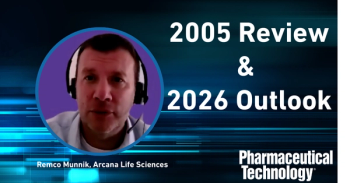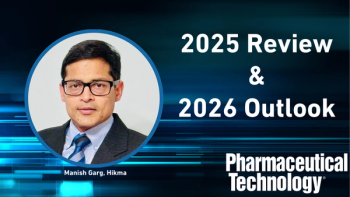
- Pharmaceutical Technology-08-02-2008
- Volume 32
- Issue 8
Can Big Pharma Produce the Next Generation of Medicines?
Patent pressures, changing disease profiles, and higher costs force companies to fight for the top.
A few years ago, there would be no question as to who would produce the next generation of medicines. The answer would certainly be the big pharmaceutical companies. Today, the answer is not as straightforward.
John Patterson, PhD
In the current environment, drug development is a long, costly, and risky endeavor. It takes $1.1 billion, on average, and 12.5 years to bring a single drug from concept to commercialization. Only one in 5000 new chemical compounds ever makes it to market, and 80% of all investigational new drugs fail, leaving just 20% to fund the research and development (R&D) engine.
The industry as a whole is facing declining R&D productivity. Stricter regulatory requirements and increasing numbers of subjects are driving up clinical study costs. For those medicines that do make it to market, the issue of patent expiry quickly presents itself.
RUPERT KING/GETTY IMAGES
A 20-year patent provides limited time to recoup R&D investment when one considers that 12.5 of those years are spent on development. The average postlaunch US patent exclusivity period for new products has fallen from 12 years in 2001 to just eight years in 2005. Many of the world's best-selling drugs face patent expiries between 2007 and 2011, and pressure continues to mount over extensions of patent terms. However, the newest and potentially most damaging threat lies with therapeutic substitution, or reference pricing, in which the expiry of the first-in-class drug leads to generic pricing or substitution of even differentiated class members long before their own exclusivity or patents expire. This makes it especially important to have a first-in-class drug or at least one that is a very fast follower or substantially differentiated from those drugs already on the market. The competitive window for opportunities is defined by the first-in-class patent expiry, resulting in diminishing returns for late life-cycle investment even though incremental improvements have a key part to play in the progress of therapeutics.
Drug pricing remains a constant issue, with pressure coming from increasingly aggressive generics and payers. As branded products go off-patent, price erosion gets steeper and faster. In negotiations with payers, a crucial element is often missing: effective drugs reduce overall healthcare spending. A 2002 study by the National Center for Policy Analysis found that for each $1 spent on newer pharmaceuticals, $6.17 is saved in total healthcare spending, with $4.44 coming from hospital savings.
Pharmaceutical companies are also under pressure from society to meet sometimes unreal expectations. These include delivering medicines that have been tested longer and in more ways than ever before, are 100% effective, produce no side effects, and are accessible to everyone who needs them, preferably tomorrow. Yet, research "breakthroughs" still take many years to become medicines.
Continuing unmet medical need
Set against all these hurdles is potential for fulfilling the continued unmet—and growing—medical needs of patients. People are living longer, and an aging population requires more healthcare and long-term disease management. Our fast-paced, fast-food society is proving to be increasingly unhealthy and a major factor in stress, addictions, and obesity. Changes in the environment are leading to more allergens and pollutants. Infections are becoming more common and drug-resistant.
So, who can best step up to these challenges? Drug researchers in academia, charities, or government agencies certainly are one option, as are hybrids, with public-private partnerships. With today's technology, smaller teams of scientists can work on a developing drug and small institutes can discover new medicines. But we have seen few, if any, marketed drugs coming from this sector. They have little development capability and no manufacturing or scale-up capacity. In addition, not all of these institutions have embedded quality guidelines. So even though these smaller groups could develop new medicines, there is much to be done before society could rely on them as a source for new medicines.
Biotech companies and startups could be another source of the future. They are small, flexible, and innovative. They are discovering large-molecule drugs and have made significant breakthroughs in genomic research. However, this is undermined by their limitations in funding, which leaves them little room to cope with either the cost of development or attrition and failure of compounds. They also usually lack the required development capability, geographical reach, and scale-up capabilities.
That leaves Big Pharma. Big Pharma companies have the geographical reach, market access, manufacturing standards, development capabilities, ability to withstand some failures and, quite important, a proven track record. Still, as an industry, this group can be "too large and bureaucratic," surprisingly conservative, and sometimes costly. As a group, Big Pharma is also weighed down by a tarnished image.
Winning characteristics
So, where will tomorrow's new medicines come from? In my view, the future will belong to those who are fast. They will be flexible and innovative with less expensive capabilities for production, distribution, and marketing. They will be able to spot winners early, have a balanced pipeline containing both small and large molecules, use translational medicine to directly apply research to patient care, and know how to bring new medicines to market.
Winners in commercializing new medicines will be those who can leverage emerging markets. They will have a global reach while understanding the nuances of local markets. They will understand and partner with regulators and collaborate with payers.
Winners will engage in personalized healthcare, aiming to create superior patient outcomes by using the right treatment for the right patient with the right dose, and be right the first time.
Winners will seek out innovation. They will fold into their pipeline of candidate drugs discovered in-house those drugs licensed from academia, small pharma, and biotech. They will pursue alliances, partnerships, and collaborations of all flavors.
This is the model AstraZeneca (London) is working toward. We are focusing on improving the quality of our candidate drugs, speeding development-cycle times, and becoming a more cost-effective organization—all with the goal of delivering better medicines to patients.
We have made considerable progress in recent years, building a robust and expanding pipeline. Our acquisition of MedImmune (Gaithersburg, MD) in 2007 added capabilities in biologicals and vaccines. We are well-positioned globally, with R&D facilities in North America, Europe, and Asia, marketing access to more than 100 geographic markets, and an efficient production and distribution capability. We have a strong and growing R&D presence in China and India, and significant clinical capability in emerging markets in Eastern Europe. We are leveraging this presence and our reputation to access scientists, healthcare providers, health and research institutions, and patients around the world.
We are delving into personalized healthcare initiatives, with several projects up and running, and we continue to invest in and develop our diagnostic capability. We have been a strong player in the in-licensing arena for the past several years, and we have hundreds of partnerships underway. Basically, we are casting a wide net to find innovation and opportunity wherever it may be.
So the answer to whether Big Pharma will be the ones delivering the next generation of medicines is: Yes. But only if those companies can leverage the qualities that made them successful in the past, while adapting to change and adopting today's winning characteristics.
John Patterson, PhD, is executive director of Development at AstraZeneca, Mereside, Alderley Park, Macclesfield SK10 4TG, Cheshire, UK, email via
Articles in this issue
over 17 years ago
CMOs Invest in High-Potency Manufacturingover 17 years ago
Suspicious Timesover 17 years ago
Charting Advances at CRSover 17 years ago
Pharmaceutical Quality Systemsover 17 years ago
In the Spotlight August 2008over 17 years ago
Report From: Vietnamover 17 years ago
FDA and Medicare at Odds?over 17 years ago
Inside USP: US Pharmacopeia Guideline for Pending Monographsover 17 years ago
Sentinel to Transform Drug Development and OversightNewsletter
Get the essential updates shaping the future of pharma manufacturing and compliance—subscribe today to Pharmaceutical Technology and never miss a breakthrough.




